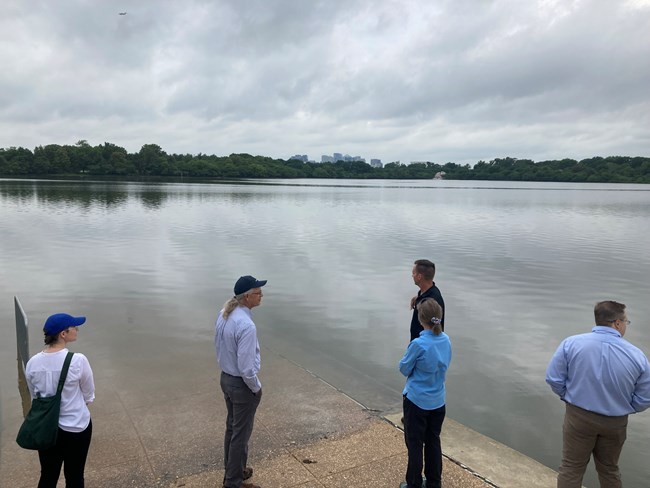Last updated: February 20, 2024
Article
Revitalizing the Tidal Basin and East Potomac Park to Restore Heritage and Protect Our Future

NPS
At the heart of our National Park Service lies a commitment to preserving our natural and cultural heritage for generations to come. As engineers, we play a vital role in ensuring that commitment endures, evolving with the time while staying true to our roots.
Imagine standing on the shores of the Tidal Basin in Washington, D.C. surrounded by the iconic cherry blossoms and historic landmarks. It’s a scene that captures the essence of our national’s capital, but beneath the surface lies a challenge that demands our attention: aging seawalls struggling to withstand the pressures of time, rising sea levels, and poor drainage. Portions of the seawalls have settled as much as five feet since their initial construction from the late 1800s to the early 1900s. As a result of this settlement and sea level rise, water flows over portions of the seawalls twice a day during normal tidal conditions. Despite various repairs over the decades, the seawalls are no longer structurally sound and threaten visitor safety and the historic setting, including the iconic cherry trees around the Tidal Basin.

NPS
The Great American Outdoors Act (GAOA) National Parks and Public Land Legacy Restoration Fund provided $112.76 million to the National Park Service for a design/build contract that was awarded in August 2023 to rehabilitate approximately 6,800 linear feet of seawall and extend its life expectancy by approximately 100 years. Construction on the project is expected to begin in mid-2024. Repair of the Tidal Basin and West Potomac Park seawalls are part of nearly $500 million in planned infrastructure improvements on the National Mall prior to the 250th anniversary of American independence in 2026. The repairs will include:
- Removing and reconstructing the existing stone masonry seawalls to include a pile-supported platform foundations that will prevent the seawalls from settling, and support height extensions of the walls if needed due to future rising sea levels or increasing storm surge.
- Increasing the seawall height to 4.75 feet within the Tidal Basin and to 5.50 feet along West Potomac Park to account for wind and wave conditions along the Potomac River.
- Salvaging and reusing stones from the historic wall in the rehabilitated seawalls, when possible Repairing, or replacing, and widening walkways around the Tidal Basin to provide smoother, more accessible connections to other pathways.
- Regrading landscaping adjacent to the seawalls as necessary to provide proper drainage.
- Repairing, or replacing, and widening walkways around the Tidal Basin from eight to twelve feet wide to provide smoother, more accessible connections to other pathways.

NPS
